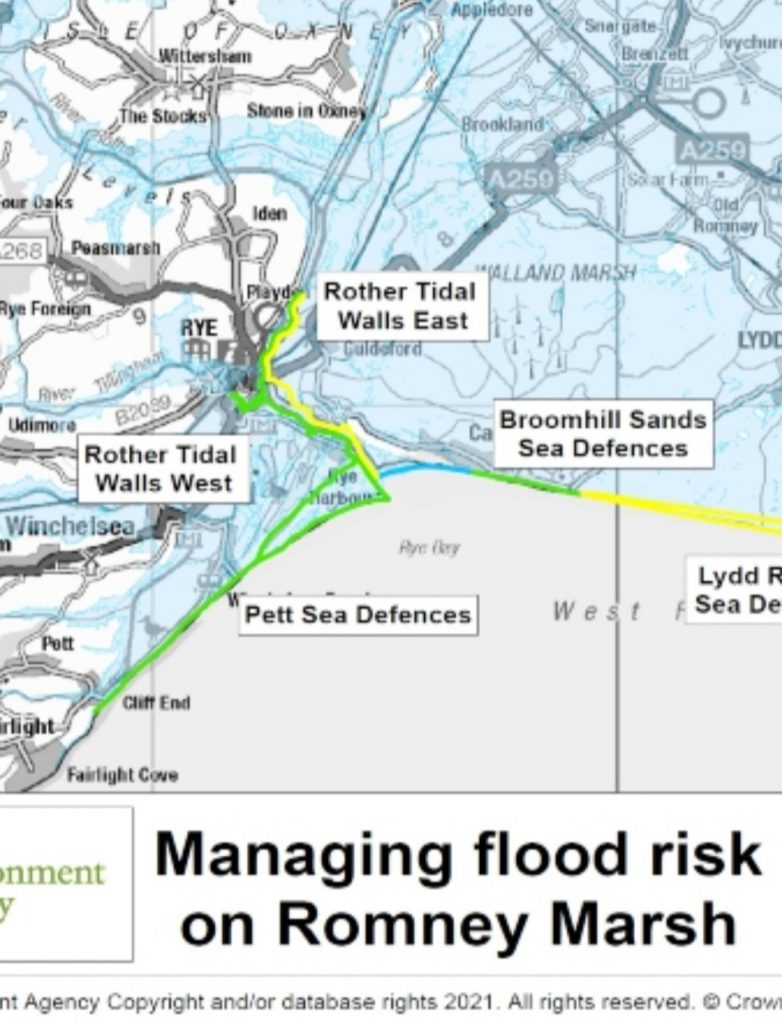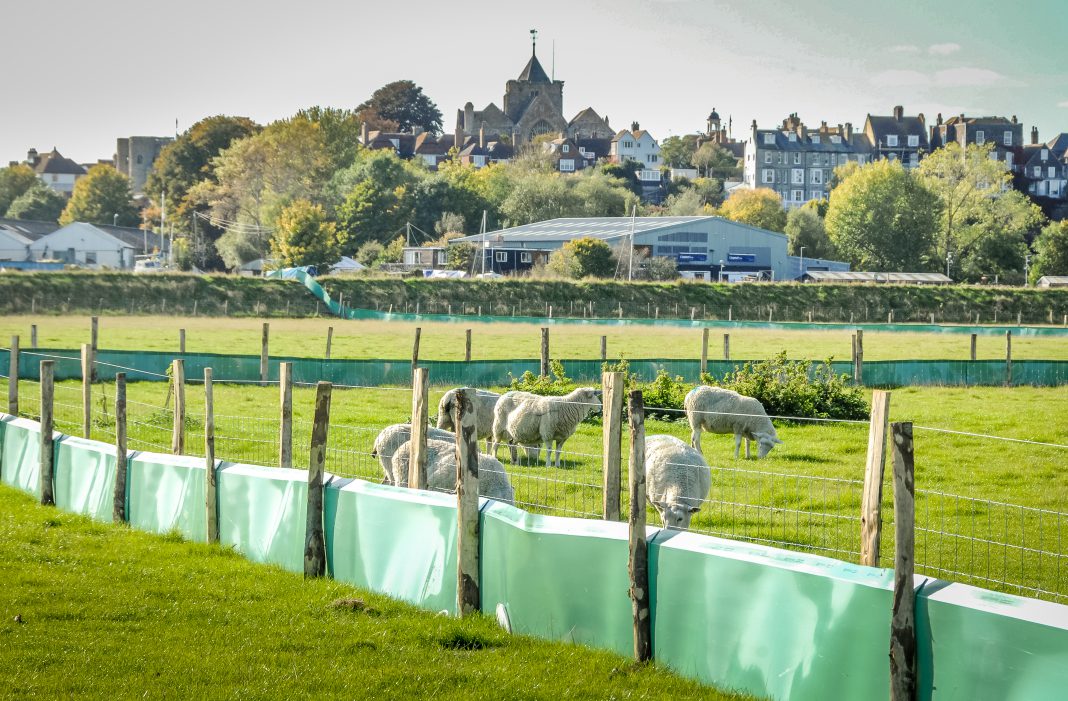To calm the nerves of all who have questioned the green newt fencing that has appeared alongside the River Rother over recent weeks – it is not a housing project.
It is actually part of the Eastern Rother Tidal Walls scheme to improve flood defences on the eastern side of the river, a programme of work extending for six and a half kilometres from Scots Float Sluice to the Harbour Master’s Office in Rye Harbour and is part of a larger project extending from Folkestone to Pett.
As part of the scheme, the Environment Agency (EA) is required to erect “reptile fencing” to channel and trap any reptiles in the area of proposed groundwork. Once captured, they will be re-located to suitable habitat away from the work. The green fencing is a legal requirement and appears on the marsh to the south of Monkbretton Bridge.

The works are being undertaken on behalf of the EA by Volker Stevin, an industry-leading engineering company specialising in maintaining vital infrastructure. Their projects include the Dover Western Docks Revival, Littlehampton Flood Defence Scheme, the Thames Tideway Tunnel, and the Ipswich tidal barrier gate, among many others.
This enabling and mobilising flood defence programme started at Folkestone in February and involves raising the embankments by half a metre, with clay material imported from local quarries. A few small sections will include sheet piling.
The main building work is scheduled for spring and summer 2023 and will last till autumn 2025, with winter breaks for ecology reasons. Work stops in Rye at the end of this month to allow for nesting of over-wintering birds and will resume next March.
An exhibition in Rye is planned in due course to provide regular updates for the public, and Volker Stevin will be organising public drop-in days at their Scots Float Sluice location on Mondays and Wednesdays, commencing March 2023. Meetings with local residents and parish councils are also planned to start with the re-commencement of work next spring.
More information can be found here.
Image Credits: Chris Lawson , EA graphic .




When the original tidal defence banks were erected, the estuary was dredged, the resulting dirt spoil was left to dry out. Once dry it was pushed up to make the flood defence banks that have lasted all these years.
This was a very simple, reliable and cheap way to protect Rye and the immediate farm land and has been extremely successful.
The obvious way would be to learn from our forebearers; remove the excess silt from the tidal estuary and add it to the top once it has dried out. Not only will this have saved the hundreds of lorry loads of clay spoil that will soon be carted into this area, but would also give the Estuary a larger capacity to store water.
This new way of doing things is hardly great for the taxpayer or for the environment. The fencing alone has reported to have cost in excess of £250,000…… I wonder how much that equates to for each Crested Newt ?
And all these miles of PLASTIC!